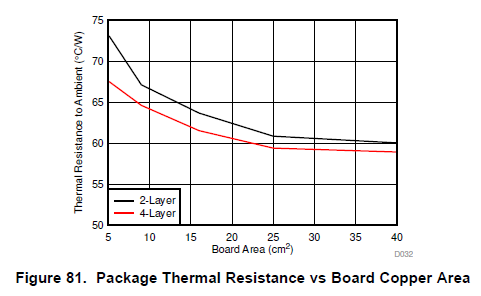Hello,
I have some questions for Figure 81 on the datasheet of LMZM23600.
1.
Is the vertical axis of graph, “Thermal Resistance to Ambient(C/W)”, the same as R_Theta_JA except for the board size environment?
R_Theta_JA is specified as 45C/W on page 5.
I know the thermal resistance to ambient highly depends on the environment. And the board size is one of big factors
But I feel that the values on Figure 81 are a little bit difference from R_Theta_JA, 45C/W.
So I want to confirm what Figure 81 shows.
2.
I would like to confirm where is Tj in this device.
Does “Tj” mean silicon die temperature inside this module like other usual ICs?
Regards
Oba


